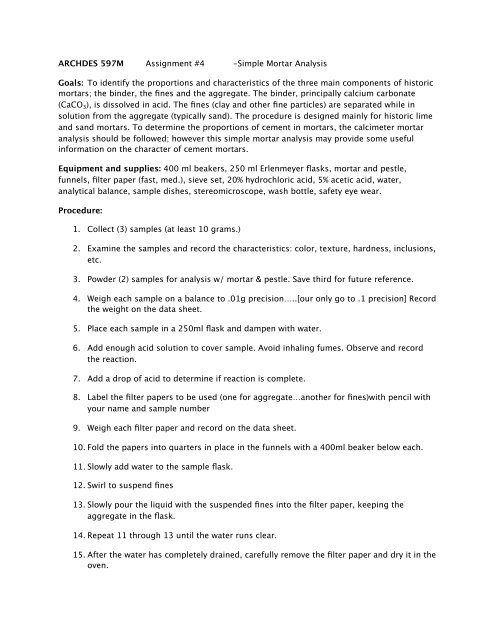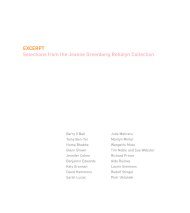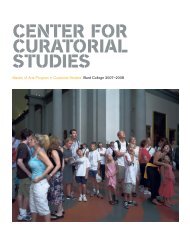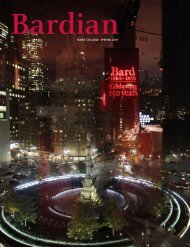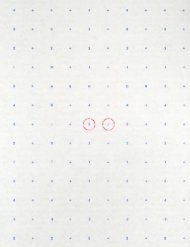You also want an ePaper? Increase the reach of your titles
YUMPU automatically turns print PDFs into web optimized ePapers that Google loves.
ARCHDES 597M Assignment #4 -Simple Mortar Analysis<br />
Goals: To identify the proportions and characteristics of the three main components of historic<br />
mortars; the binder, the fines and the aggregate. The binder, principally calcium carbonate<br />
(CaCO₃), is dissolved in acid. The fines (clay and other fine particles) are separated while in<br />
solution from the aggregate (typically sand). The procedure is designed mainly for historic lime<br />
and sand mortars. To determine the proportions of cement in mortars, the calcimeter mortar<br />
analysis should be followed; however this simple mortar analysis may provide some useful<br />
information on the character of cement mortars.<br />
Equipment and supplies: 400 ml beakers, 250 ml Erlenmeyer flasks, mortar and pestle,<br />
funnels, filter paper (fast, med.), sieve set, 20% hydrochloric acid, 5% acetic acid, water,<br />
analytical balance, sample dishes, stereomicroscope, wash bottle, safety eye wear.<br />
Procedure:<br />
1. Collect (3) samples (at least 10 grams.)<br />
2. Examine the samples and record the characteristics: color, texture, hardness, inclusions,<br />
etc.<br />
3. Powder (2) samples for analysis w/ mortar & pestle. Save third for future reference.<br />
4. Weigh each sample on a balance to .01g precision…..[our only go to .1 precision] Record<br />
the weight on the data sheet.<br />
5. Place each sample in a 250ml flask and dampen with water.<br />
6. Add enough acid solution to cover sample. Avoid inhaling fumes. Observe and record<br />
the reaction.<br />
7. Add a drop of acid to determine if reaction is complete.<br />
8. Label the filter papers to be used (one for aggregate…another for fines)with pencil with<br />
your name and sample number<br />
9. Weigh each filter paper and record on the data sheet.<br />
10. Fold the papers into quarters in place in the funnels with a 400ml beaker below each.<br />
11. Slowly add water to the sample flask.<br />
12. Swirl to suspend fines<br />
13. Slowly pour the liquid with the suspended fines into the filter paper, keeping the<br />
aggregate in the flask.<br />
14. Repeat 11 through 13 until the water runs clear.<br />
15. After the water has completely drained, carefully remove the filter paper and dry it in the<br />
oven.


